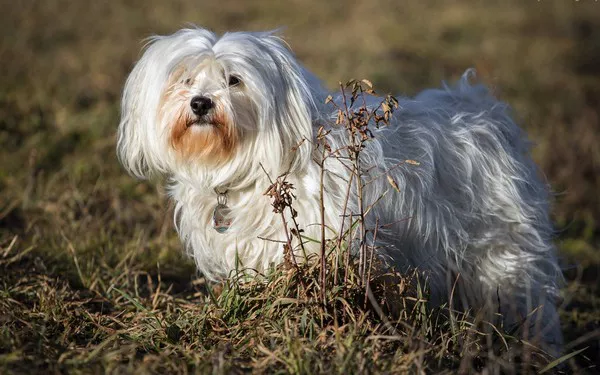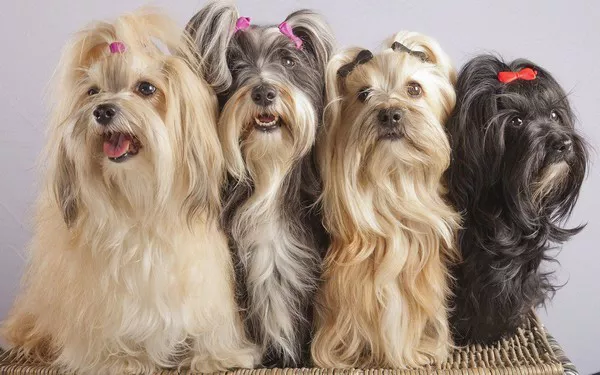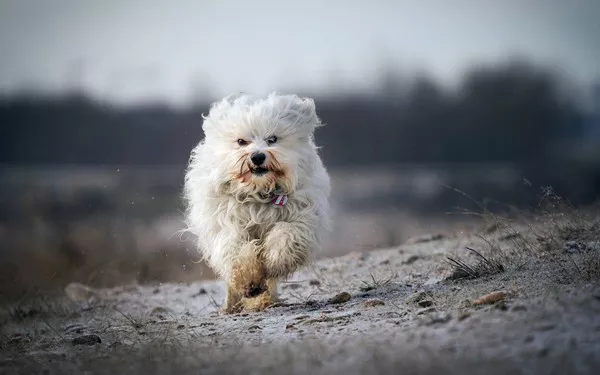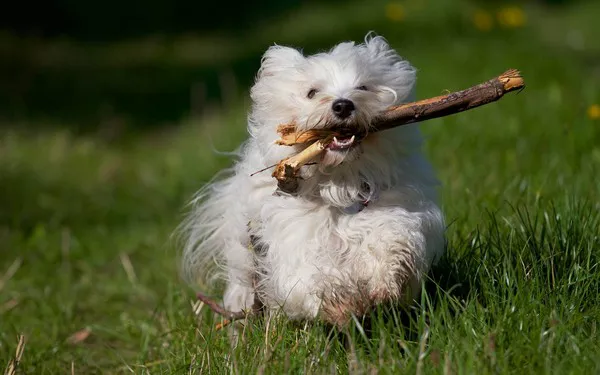Shedding is one of the most common issues dog owners face, and it’s a natural part of life for many breeds. Hair loss can vary dramatically between breeds, and for new owners, understanding what to expect can be daunting. For Schnauzer lovers or those considering adopting one, the question often arises: Do Schnauzers shed a lot of hair? In this article, we’ll break down the facts about Schnauzer shedding, help you understand their coat structure, and explore grooming techniques that will keep shedding to a minimum. We’ll also address common myths and provide a full picture of what you can expect with these intelligent, lively dogs.
Understanding the Schnauzer Coat
Schnauzers are known for their distinctive look, often recognized by their bushy beards, wiry coats, and iconic eyebrows. However, many people may not know that the Schnauzer family consists of three distinct sizes: the Miniature Schnauzer, the Standard Schnauzer, and the Giant Schnauzer. Each of these has a double coat consisting of a wiry outer layer and a soft undercoat.
Unlike many other breeds, Schnauzers do not shed their fur continuously like other dogs with single coats, such as Labradors or Beagles. This characteristic places them in a category known as “low-shedding” or “hypoallergenic” breeds. But what does this really mean for the owner, and how much hair can one expect around the house?
Double Coat Structure
The key to understanding Schnauzer shedding lies in their double-layered coat. The outer coat, also referred to as the “guard coat,” is thick, wiry, and designed to protect the dog from harsh environmental elements. Beneath this protective layer lies the undercoat, which is softer and provides warmth during colder seasons.
While the outer coat is more resistant to shedding, the undercoat may loosen and fall out during specific times of the year, particularly during seasonal changes in the spring and fall. This natural process is known as “blowing the coat.” However, even this shedding process is mild compared to other breeds.
The Low-Shedding Myth
There’s a common belief that Schnauzers are non-shedding dogs. While it’s true that they shed less than many breeds, Schnauzers do shed to some extent. However, shedding is significantly reduced when proper grooming practices are followed. In contrast to dogs with continuous shedding cycles, Schnauzers’ hair typically stays in place until it is manually removed, such as during brushing or trimming.
Hypoallergenic Claims: What Does It Mean?
The term “hypoallergenic” is often associated with Schnauzers, but it’s important to clarify that no dog breed is completely hypoallergenic. People with allergies often react not just to hair but also to pet dander, which consists of microscopic flakes of skin that animals shed. Schnauzers may produce less dander than some other breeds, but individuals with allergies may still react.
That being said, many Schnauzer owners with mild allergies find that they can tolerate these dogs well with proper grooming and cleaning routines. The reduced shedding also means there are fewer allergens floating in the air and fewer stray hairs on clothes and furniture.
Factors That Influence Schnauzer Shedding
While Schnauzers don’t shed excessively, several factors can affect the level of shedding or hair loss in individual dogs. It’s crucial to understand these variables if you’re concerned about managing shedding in your home.
Seasonal Shedding
As mentioned earlier, Schnauzers do experience seasonal shedding. During the spring and fall, they may shed more of their undercoat as they transition between the warmer and cooler months. This is a normal biological process designed to keep them comfortable, but it can lead to more noticeable hair loss during these periods.
Diet and Nutrition
A Schnauzer’s diet plays an important role in the health of their coat. A diet rich in omega-3 and omega-6 fatty acids can promote healthy skin and hair, leading to reduced shedding. Deficiencies in these essential nutrients can result in dry, brittle hair, which is more likely to break and fall out. Providing a high-quality diet, whether through commercial dog food or home-prepared meals, can make a substantial difference in the amount of shedding you observe.
Health Conditions
Certain health conditions can also contribute to unusual or excessive shedding in Schnauzers. For instance, skin infections, allergies, or hormonal imbalances like hypothyroidism can lead to patchy hair loss or increased shedding. Regular check-ups with a veterinarian can help detect and address underlying issues that may be impacting your Schnauzer’s coat health.
Grooming Your Schnauzer to Reduce Shedding
One of the most effective ways to manage a Schnauzer’s shedding is through regular grooming. Given their unique coat structure, grooming plays a crucial role in keeping their fur in top condition while minimizing loose hair in your home.
Brushing: The Key to Managing Hair
Brushing is the primary defense against shedding for Schnauzers. Regular brushing helps to remove loose hairs before they fall out naturally and prevents matting, which can worsen shedding. Most Schnauzer owners find that brushing their dog’s coat two to three times per week is sufficient. Using the correct tools is equally important—slicker brushes or combs designed for double-coated dogs work best.
For owners of Giant Schnauzers, whose coats are larger and thicker, daily brushing may be necessary, especially during seasonal shedding periods.
Hand Stripping vs. Clipping
Schnauzer coats are often maintained through two specific grooming techniques: hand stripping or clipping.
Hand stripping involves manually pulling out dead hairs from the outer coat. This method closely mimics the natural process of shedding and helps maintain the coat’s wiry texture. Hand stripping not only minimizes shedding but also preserves the dog’s characteristic appearance.
Clipping, on the other hand, involves trimming the outer coat with clippers. While this method is less time-consuming, it can soften the coat’s texture over time and potentially lead to increased shedding as the natural hair removal process is interrupted.
Owners who want to keep their Schnauzer’s coat in optimal condition while reducing shedding are often advised to combine these methods or consult a professional groomer who is familiar with hand stripping.
Bathing and Skin Care
Regular baths can help reduce shedding by keeping your Schnauzer’s coat clean and free of debris. However, overbathing can strip the coat of its natural oils, leading to dry skin and increased shedding. It’s recommended to bathe Schnauzers every 4–6 weeks using a gentle, dog-friendly shampoo.
See Also: Are Schnauzers Good Guard Dogs?
Proper skin care is also essential in maintaining a healthy coat. Dry or irritated skin can exacerbate shedding, so be sure to address any skin conditions as soon as they appear. Supplements such as fish oil can help promote healthy skin and reduce shedding.
Addressing Shedding Through Your Home Environment
While grooming is the most direct way to reduce shedding, managing your Schnauzer’s environment can also help keep hair at bay. Taking a proactive approach to cleaning and maintaining your home can significantly reduce the impact of shedding on your living space.
Vacuuming and Air Filtration
One of the most effective ways to control shedding in your home is through regular vacuuming. Invest in a vacuum cleaner with strong suction and a HEPA filter, which will capture even the tiniest hairs and dander particles.
For people with allergies, an air purifier can also make a big difference. Pet dander can linger in the air, so using an air purifier with a HEPA filter helps to remove these allergens, keeping the indoor air cleaner and reducing the risk of allergic reactions.
Furniture Protection
To protect your furniture from pet hair, consider using washable furniture covers or pet-specific blankets. These covers can easily be removed and cleaned, preventing pet hair from embedding into the fabric of your furniture. You can also encourage your Schnauzer to use designated pet beds, which are easier to clean than couches or chairs.
Regular Cleaning of Dog Bedding
Cleaning your Schnauzer’s bedding regularly will help keep loose hair and dander from spreading throughout your home. Wash their bedding weekly, and be sure to brush your dog before they settle into their sleeping area to minimize the amount of loose hair.
When to Seek Veterinary Advice About Shedding
While Schnauzers are not known for heavy shedding, there are instances where excessive hair loss might be a sign of an underlying health issue. If you notice any of the following symptoms, it’s essential to consult your veterinarian for further investigation:
- Bald patches or thinning hair
- Dry, flaky, or irritated skin
- Excessive scratching or licking
- Sudden increase in shedding outside of seasonal changes
Common conditions such as allergies, mange, or thyroid imbalances can lead to unusual shedding and should be addressed promptly.
Conclusion
In summary, Schnauzers do not shed a lot compared to other breeds, making them an attractive option for people looking for a low-shedding dog. However, shedding is still a natural process, and grooming is essential for managing the amount of hair that ends up in your home.
Regular brushing, proper diet, and attention to your Schnauzer’s overall health are the keys to keeping shedding at bay. While no breed is entirely hypoallergenic, Schnauzers are considered one of the better options for allergy sufferers due to their minimal shedding and lower dander production.
By understanding your Schnauzer’s coat and implementing good grooming practices, you can enjoy the companionship of these loyal and intelligent dogs without being overwhelmed by shedding. Whether you own a Miniature, Standard, or Giant Schnauzer, the time you invest in caring for their coat will result in a clean and comfortable living environment for both you and your dog.
Related Topics:






















